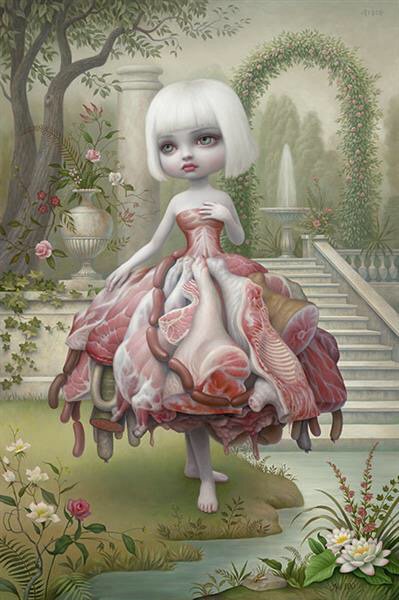
Claes Oldenburg was a Swedish-born American sculptor who best known for his public art installations. These often feature large soft sculptures of everyday objects. They often reflect on how people interact and relate to the world. Millions of people view Oldenburg's work every year.
Influences
One of Claes Oldenburg's many influences is his fascination with street life. He realized that elements from the street could make for great sculpture subjects. Oldenburg started to experiment with different media like painting and sculpture. He got involved in happenings which were interactive art experiences that had a purpose. He was also inspired theatre and has incorporated it into his work.
Oldenburg's first sculptures are reminiscent in many ways of Abstract Expressionism. But they also have a distinct conceptual point. Oldenburg was fascinated by metamorphoses, and saw analogies among dissimilar images. Oldenburg's relationships were not literal. However, they were associative. These associations heightened the objects’ power as contemporary toys. Oldenburg was also fascinated by mutability, as were contemporary artists Stella and Morris. Ron Davis, a young abstract artist, is another example of an artist who was inspired by the idea of mutability.

Style
Claes Olenburg's style was influenced in part by his New York City roots. As an assistant at Cooper Union Museum he studied history of art, and developed his own style. Oldenburg was heavily influenced by the work of fellow artists, especially from the abstract expressionist school. He was inspired by the work of artists like Red Grooms, Allan Kaprow, Jim Dine, and Robert Whitman.
Oldenburg's work combined ironic humor about consumer products with meticulous construction details. His sculptures were often large and impressive, and his mastery over scales and proportions is legendary. His most notable works are the upside-down icecream cones, Cupid's Spans, Batcolumns and Flying Pins. These were all installed in cities throughout the world. Oldenburg did large-scale public works as well as sculptures.
Life-size sculptures
Oldenburg's work incorporates both meticulous construction details as well as satire on consumer products in life-size sculptures. His mastery over proportions at large scales was also what made him famous. Oldenburg created iconic sculptures such as Upside-Down Ice Cream Cone in Cologne and Flying Pins in Eindhoven. The large piece in the center of Cologne harbor is the first. The latter is an interactive sculpture that collides with the corner of a shopping mall's roof. Oldenburg also has Batcolumn in Chicago, Dropped Cone (Philadelphia) and Batcolumn (Chicago). The artist is based in New York City. However, he also works in France or California.
Oldenburg married Coosje van Bruggen in 1977. They worked together many years on massive polychrome sculptures. Van Bruggen dealt with the logistics of the projects, and Oldenburg's sketches were best realized. Oldenburg concentrated on his larger-scale sculptures, such as public monuments. Their collaboration evokes Jean-Claude and Christo.

Technique
Oldenburg's works are based on objects and modify their forms, materials, and states to create dynamic, ambiguous perceptions of time and space. He transforms everyday objects into art, for example, a tea bag into a painting and a sculpture. His works are similar to Pollock's drip painting and have a tendency not to emphasize the importance of composition. Oldenburg was the child of a Swedish diplomat. He was raised in Chicago.
Oldenburg's artistic imagination enables him to re-link seemingly unrelated objects by creating formal analogies. He sought to break free from the static perspective of everyday life and reposition perception as a stepping-stone for the creative. Oldenburg's approach towards perception is similar in style to Surrealism, who recognizes the interrelationship among image and percept.
FAQ
How did pop music get started?
It was accidental. It was an accident. The first song was accidentally written when someone knocked over the piano while playing on New Year's Eve 1920.
The recording company liked what they heard and decided to release it as a single.
This became the first recorded hit single.
Pop music is today the most popular form musical entertainment.
How did pop culture develop?
Technology was key to the rise of popular culture. As people became more mobile, it developed. The invention of the radio enabled mass communication. This led to the rise of television which then gave birth to the internet.
People started using computers at home and were exposed to computer games. These games were played on consoles, such as the Nintendo Wii and Sony Playstation3. These games are now available online for free. Many youngsters now choose to play videogames over watching TV.
Video games are very much in demand among teenagers and children. These games can be played by one person or with others via the internet. Call Of Duty, Grand Theft Auto and other violent games can be dangerous. Parents are concerned about their children playing these violent games. Some people find it thrilling to see what happens when a character is killed.
Another way pop culture influences youth is through music videos. They provide information about celebrities and current trends. They are loved by young people. It is clear that music plays a significant role in our lives.
Music videos are often made by artists who add special effects to their songs. For example, rappers wear wigs and makeup to look more attractive. Others put themselves through extreme physical demands to show off their bodies. Many singers are able to sing while wearing costumes.
There are so many options for music today. You can find any type of music that you desire. This is not always good news. Music can sometimes encourage violence. People become angry when they hear certain lyrics and words. Sometimes they even commit crime.
50 Cent recently experienced this. The line from his song Get Rich Or Die Trying is "I'm going down a motherfucker / I don’t know why, but I might." Someone heard this song and thought it meant that he was going to kill someone. A man threatened him by calling him. 50 Cent updated the lyrics. Now it only says: "I'll shoot a bitch down/ I don't know why but I just may."
Popular culture is essential. We need to be able to see how it affects our lives. If we don’t understand how it affects us, we won’t be able prevent its harmful effects.
What can pop culture teach you?
Our society today places more importance on material goods than all other things. This is especially true with young people. They spend hours per day looking at screens. They are addicted to video games, movies, and surfing the web. They are distracted from their schoolwork by all of these distractions. This causes them to fail classes.
Everyone wants to fit in. That means being popular. Popularity hinges on having money, clothing, and other possessions. This makes it easy for some people to do wrong.
We are too dependent upon technology. The internet has made it possible to access all sorts of information. Unfortunately, not all information can be trusted. False rumors can be found all over the Internet. These rumors spread quickly because people share them on social media sites. It's easy and quick to post something without verifying whether it is true.
People have lost the ability to think critically. They believe what they see online. They believe what is written in magazines and on television. They stop thinking for their own sake. They instead follow the crowd.
Relying on others for information can cause us to lose control of our lives. Pop culture teaches us that we can depend on others. It can also make us lazy. Although the truth is out there and we often don't find it, it can make us lazy.
Why is pop music so popular?
Pop music is loved because it is enjoyable! Pop music is uplifting and can give you a great feeling of freedom. Pop music allows people to be free from any limitations and think about only themselves. They don’t have to worry what other people think. Pop music is a hugely popular genre. People enjoy listening to music that makes them feel good. When you feel low, turn on the radio for some upbeat tunes. You may even find yourself singing along. Pop music has been immensely successful over the years.
Who first coined the term Pop Music
Invented by Frank Zappa. He used the word pop music to describe his style of music.
He said that he wanted to write music that would appeal to everyone. This is why he called the music "pop music".
Zappa also created the phrase "You know it's POP when..." which means that something is really popular if many people enjoy it. Michael Jackson's Thriller is one example of the greatest-selling albums.
Zappa has a different definition of pop music than we do today. Today, pop music includes all types of music. But, there were only certain types of music that was considered pop back in those days.
What are some positive elements of pop culture
Pop culture has some positive aspects. For instance, it gives people something to talk about. Pop culture also helps people express creativity. Pop culture can help artists promote their work.
In my opinion, the best thing about pop culture is that it brings people together. Everyone wants to watch the same shows. Everyone listens to the same music. Everybody likes the exact same movies. Pop culture allows people to connect.
The problem is that not all pop culture is healthy. For example, some films glorify violence. Some television shows make fun people with mental disabilities. Others encourage their fans and followers to get high.
What should we do about the negative aspects pop culture?
We should avoid negative aspects of pop culture. We shouldn't let it influence us. It can cause problems for our health. It can even lead criminality. It can even affect our relationships.
We should also think about whether pop culture is helping or hurting society. Does it promote good values? Are people being indoctrinated to do terrible things?
Let's not forget to ask ourselves if our world is fulfilling. Do we like the music we listen to? What do we like about the TV shows we watch What clothes do we wear?
If we care about our future, then we have to be accountable for our actions. We need to decide what kind of world we want to live in. Then we can choose the right type of pop culture.
How do I use pop culture in my marketing strategy?
Understanding pop culture trends is key to understanding how to incorporate it into your marketing strategy.
Let's take, for example, the promotion of a new movie. What type of promotion could you offer?
You could even create a trailer from clips taken from your film. You can even find clips that feature your products and services to include in your trailer.
Perhaps you could make a parody of the trailer with other films.
If you were promoting a product or service that related to the film's theme, then you could create a promotional campaign based on the movie's plotline. One example: If you are promoting a product or service that helps astronauts keep healthy while they travel through space, it might make sense to promote the product.
Promos could be run for businesses that are related to the movie's plotline. You could, for example, offer food samples to customers who purchase tickets to the movie.
Statistics
- Yet a Nielsen study shows they account for 42% of the country's most-watched content on streaming services. courtesy Nielsen (npr.org)
- According to Kathryn Sorrells (2013, pp. 142-144), there are several ways that we can become informed consumers of popular culture. (socialsci.libretexts.org)
- [17][18][19]Definition[edit]According to author John Storey, there are various definitions of popular culture. (en.wikipedia.org)
- Recently, the market share across Western Europe has ranged from 60-75% (Hopewell, 2013). (socialsci.libretexts.org)
- According to Dictionary.com, popular culture, or low culture as it is sometimes referred to is comprised of the “cultural activities or commercial products reflecting, suited to, or aimed at the tastes of the general masses of people” (7/21/19). (socialsci.libretexts.org)
External Links
How To
What are some famous pop culture references?
Americans were obsessed by space travel in 1960s. The most popular TV show at the time was Star Trek.
The original series aired on NBC from 1966-1969. The series starred William Shatner playing Captain Kirk, Leonard Nimoy portraying Mr. Spock and DeForest Kelley portraying Dr. McCoy. James Doohan played Scotty. Majel Barrett Roddenberry was Uhura. Nichelle Nichols was Lieutenant Nyota Uhura. Walter Koenig was Pavel Chekov. Grace Lee Whitney was Yeoman Janice Rand. (Wikipedia)
In 1967, the premiere of the first feature film based upon the series took place. It was titled "Star Trek," released by Paramount Pictures. Robert Wise directed this movie. The cast included William Shatner. Leonard Nimoy. DeForest Kelley. James Doohan. Walter Koenig. Majel Barrett. Roland Nichelle Nichols. George Takei. Grace Lee Whitney. (Wikipedia)
The second season of the TV series started airing in 1968. This season focused on the crew traveling back in time to 1969. (Wikipedia)
The third season of the series began airing in 1971. This season introduced Commander Richard A. Morn, a new character. He was a Starfleet officers who was originally born on Earth 2063. (Wikipedia)
"Star Trek: Planet of the Apes", a live action spinoff was also available during this time. It aired in 1972 and 1974. (Wikipedia)
In 1973, the fourth season of the television series debuted. The fourth season featured two new characters, Ensign Ro Laren (Lt. Ilia) and Ensign Ro Laren (Ensign Ro Laren). Marina Sirtis was the one who played them both. (Wikipedia)
The fifth season premiered in 1975. It was the last series to air before the franchise went out of business. (Wikipedia)
After the television series was canceled, several attempts were made to revive it. Some of them included a 1977 pilot episode entitled "Where No Man Has Gone Before," which failed to find a network or studio partner. (Wikipedia)
Star Trek: New Voyages also aired as an animated series in 1998. It lasted only 13 episodes. (Wikipedia).
In 2009, the sixth season of the television series returned after a seven-year hiatus. It was titled "Enterprise". It ran for five seasons before it ended in 2013. (Wikipedia)
This era also saw the production of three feature films. The first movie was released on September 12, 1979. It was called "Star Trek: The Motion Picture." Nicholas Meyer directed it. The film starred William Shatner, James Doohan, Leonard Nimoy, Walter Koenig, George Takei, Majel Barrett Roddy, and Ricardo Montalban. (Wikipedia)
The two next movies were released in 1982, and 1987, respectively. They were titled "Star Trek II: The Wrath of Khan" (or "Star Trek III): The Search For Spock. Nicholas Meyer directed both of these movies. (Wikipedia)
The seventh season of the TV series aired in 2001. It was entitled "Encounter at Farpoint". It was the debut episode of the show's era without guest stars. (Wikipedia)
2005 saw the airing of the final episode. It was called "All Good Things ...".". Ronald D. Moore wrote it. David Livingston directed it. (Wikipedia.)
Star Trek TV Show premiered 2008 with a brand new series. It was called "Trek Nation". It's currently being broadcast on CBS. (Wikipedia) "Trek Nation" is a story about a group of people with different backgrounds who join forces to create their version of United Federation of Planets. Their goal is to help other planets achieve peace with each other. (Wikipedia). "Trek Nation", an intriguing concept, shows how diverse people can work together and create good things. (YouTube Video)
I recommend that you read books about Star Trek's timeline. You can start with the book "Star Trek Chronology" by Gary Wolfe. There are many more books available online.